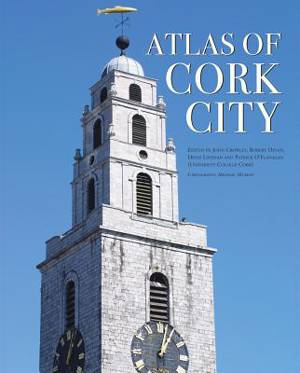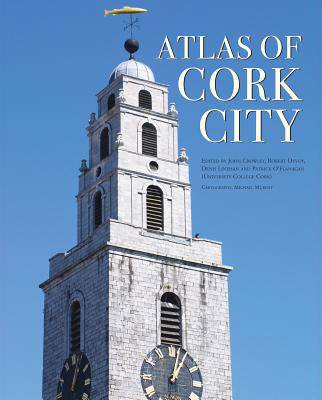
- Afhalen na 1 uur in een winkel met voorraad
- Gratis thuislevering in België vanaf € 30
- Ruim aanbod met 7 miljoen producten
- Afhalen na 1 uur in een winkel met voorraad
- Gratis thuislevering in België vanaf € 30
- Ruim aanbod met 7 miljoen producten
Zoeken
€ 78,95
+ 157 punten
Omschrijving
The evolution of Cork city is traced through a wide-ranging series of texts, and through a rich tapestry of images, including photographs, archival material, satellite images, and artwork.
* The atlas provides the reader with one of the most comprehensive collection of historic maps on Cork.
* It brings together for the first time specialists from a wide range of disciplines (including geographers, historians, and archaeologists), who explore the city and its development over time.
* Lavishly illustrated, the atlas offers the reader a timely and unique guide to Cork and its transformation.
A unique project, marking Cork's designation as European Capital of Culture in 2005, the Atlas provides the reader with a range of perspectives on the city and its development over time. It is not an atlas in the conventional sense, as it is not solely reliant on maps, though there are many of these, both historical and specially commissioned for the volume.
The initial chapters place the city in its environmental setting. Subsequent chapters trace its physical and cultural development over time. With over fifty contributors from a wide range of disciplines offering forty chapters and a fascinating series of case studies, the range is remarkable and the topics covered often surprising. Over 200 maps cover everything from geology, through evolving street patterns, to the distribution of Gaelic Athletic Association clubs.
Given its significant maritime heritage, Cork has been shaped by both external and internal influences, and the cityscape bears the imprint of the various peoples who have lived and settled there. This is not just one story, but a myriad of stories, some better known than others, but all contributing to the making and remaking of the city--a city continually in transition. The atlas also provides its readers and planners with an opportunity to reflect in a more informed way on Cork's future development.
* The atlas provides the reader with one of the most comprehensive collection of historic maps on Cork.
* It brings together for the first time specialists from a wide range of disciplines (including geographers, historians, and archaeologists), who explore the city and its development over time.
* Lavishly illustrated, the atlas offers the reader a timely and unique guide to Cork and its transformation.
A unique project, marking Cork's designation as European Capital of Culture in 2005, the Atlas provides the reader with a range of perspectives on the city and its development over time. It is not an atlas in the conventional sense, as it is not solely reliant on maps, though there are many of these, both historical and specially commissioned for the volume.
The initial chapters place the city in its environmental setting. Subsequent chapters trace its physical and cultural development over time. With over fifty contributors from a wide range of disciplines offering forty chapters and a fascinating series of case studies, the range is remarkable and the topics covered often surprising. Over 200 maps cover everything from geology, through evolving street patterns, to the distribution of Gaelic Athletic Association clubs.
Given its significant maritime heritage, Cork has been shaped by both external and internal influences, and the cityscape bears the imprint of the various peoples who have lived and settled there. This is not just one story, but a myriad of stories, some better known than others, but all contributing to the making and remaking of the city--a city continually in transition. The atlas also provides its readers and planners with an opportunity to reflect in a more informed way on Cork's future development.
Specificaties
Betrokkenen
- Auteur(s):
- Uitgeverij:
Inhoud
- Aantal bladzijden:
- 400
- Taal:
- Engels
- Reeks:
- Reeksnummer:
- nr. 3
Eigenschappen
- Productcode (EAN):
- 9781859183809
- Verschijningsdatum:
- 31/01/2006
- Uitvoering:
- Hardcover
- Formaat:
- Genaaid
- Afmetingen:
- 241 mm x 302 mm
- Gewicht:
- 2585 g

Alleen bij Standaard Boekhandel
+ 157 punten op je klantenkaart van Standaard Boekhandel
Beoordelingen
We publiceren alleen reviews die voldoen aan de voorwaarden voor reviews. Bekijk onze voorwaarden voor reviews.













